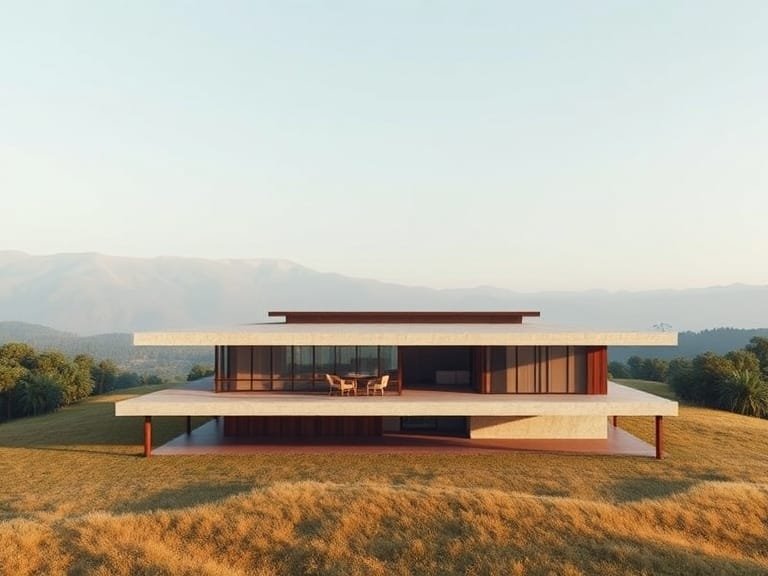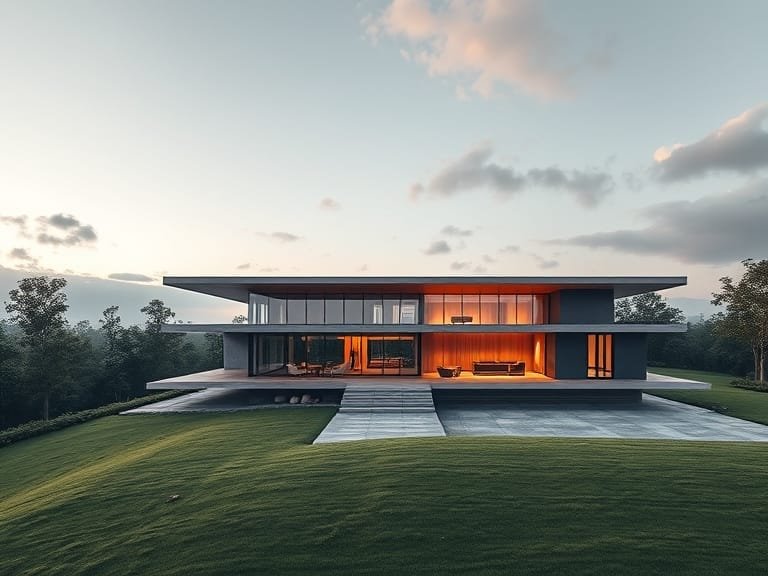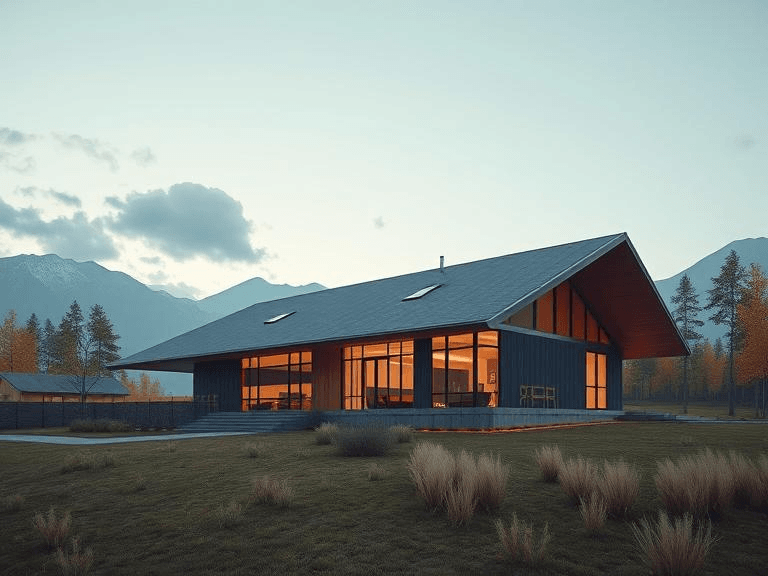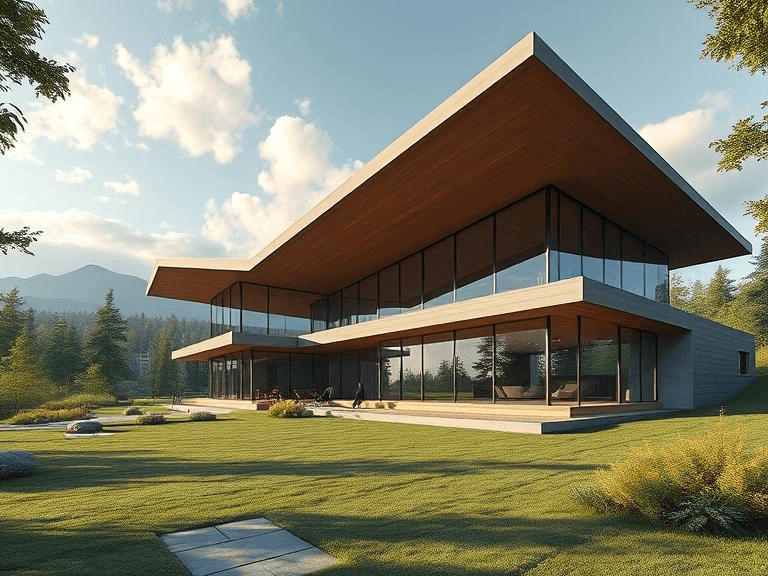
Flat roofs are increasingly popular in both residential and commercial buildings due to their simplistic design and functional advantages. Understanding the different types of flat roofing materials is essential when considering a flat roof replacement, as each type has unique characteristics, benefits, and suitable applications.
One of the oldest materials is the built-up roof (BUR), which consists of multiple layers of bitumen and reinforcing fabrics. Its composition provides excellent durability and a long lifespan, making BUR suitable for various climates. Its layered approach also offers additional moisture protection, while the gravel topping offers a level of UV resistance.
Another popular option is modified bitumen, which is an evolution of BUR technology. Typically installed in large rolls, modified bitumen roofs are reinforced with fiberglass or polyester. This type presents ease of installation and improved elasticity, making it a favorable choice for areas with fluctuating temperatures. Its self-adhering versions reduce labor costs and are ideal when rapid installation is required.
Membrane roofing systems, including thermoplastic polyolefin (TPO), polyvinyl chloride (PVC), and ethylene propylene diene monomer (EPDM), are gaining traction in the flat roofing market. TPO roofs are lightweight and have reflective properties that enhance energy efficiency. On the other hand, PVC roofs are known for their excellent resistance to moisture and chemicals, making them suitable for buildings requiring stringent cleanliness. EPDM, a synthetic rubber, is celebrated for its flexibility and longevity, often withstanding severe weather conditions.
The alternative of green roofs integrates vegetation and soil into the roofing system. This approach not only provides insulation but also helps in managing stormwater runoff, offering environmental benefits and aesthetic appeal. Each of these flat roof types presents unique advantages that can align with different building needs and personal preferences.
Key Factors to Consider When Choosing Material
When selecting materials for flat roof replacement, various key factors must be taken into account to ensure the durability and functionality of the roofing system. One of the foremost considerations is the climate conditions in the area. Different materials respond uniquely to heat, moisture, and environmental stressors. For instance, regions with heavy rainfall may benefit from materials with superior waterproofing capabilities, while areas prone to extreme heat might require reflective surfaces to enhance energy efficiency.
Another significant aspect is the intended use of the building. Commercial buildings may have different roofing needs compared to residential homes. Understanding the building’s purpose—whether for storage, habitation, or commercial operations—will guide the selection process effectively. Each use-case may also dictate the surface’s load-bearing requirements and fire safety considerations.
Budget constraints also play a crucial role in choosing the right material for flat roof replacement. It is essential to balance initial installation costs with long-term value. Certain materials might seem economical at first but may incur higher maintenance or replacement costs over time. Therefore, it is beneficial to evaluate the initial investment against the expected lifespan of the materials, as a higher upfront cost could lead to greater savings in the long run if the material lasts significantly longer.
Energy efficiency is another vital consideration, particularly as it relates to reducing heating and cooling costs. Roofing materials that reflect sunlight can help lower energy bills by maintaining more stable indoor temperatures. Finally, maintenance requirements should not be overlooked. Some materials require regular upkeep to prevent water damage and other issues, while others may be more self-sustaining. By carefully considering these factors, property owners can make informed decisions that best suit their needs, ultimately leading to a more effective flat roofing solution.
Comparing Durability and Lifespan of Materials
When considering flat roof replacement, one of the foremost aspects to evaluate is the durability and lifespan of various roofing materials. The longevity of a flat roof is influenced by both the material selected and the environmental conditions it encounters throughout its service life. Common materials used for flat roofing include TPO (Thermoplastic Olefin), EPDM (Ethylene Propylene Diene Monomer), and modified bitumen, each exhibiting unique characteristics relative to durability.
TPO roofing is known for its robust nature, with a lifespan averaging between 15 to 25 years. Its reflective surface helps in resisting heat, thereby reducing thermal fatigue. This characteristic provides added resilience against weather-related damages, such as those caused by severe UV radiation. However, the longevity of TPO can vary depending on installation quality and environmental factors, including exposure to harsh climates.
On the other hand, EPDM has established a reputation for its exceptional durability, frequently lasting 20 to 30 years. Known for its excellent resistance to ozone and UV exposure, EPDM roofs remain stable even in extreme temperature fluctuations. This material can withstand significant weather elements, making it a popular choice for regions with challenging climates. Nonetheless, regular maintenance is crucial in extending its life expectancy.
Modified bitumen, a blend of asphalt with rubbery modifiers, typically provides a lifespan of 15 to 25 years. Its multilayered structure contributes to its durability, enabling it to withstand punishing weather conditions such as heavy rains and strong winds. However, the performance of modified bitumen can be affected by quality of installation and age-related wear.
In conclusion, evaluating the durability and lifespan of roofing materials is critical in the process of choosing the right material for flat roof replacement. Understanding these factors helps homeowners and building managers make informed decisions that align with their specific environmental conditions and durability expectations.

Energy Efficiency and Insulation Properties
When considering flat roof replacement, one of the critical factors is the energy efficiency of the roofing materials. Different materials exhibit varying degrees of insulation properties, which directly influence the thermal performance of the building beneath. Good insulation minimizes the transfer of heat, thereby maintaining a consistently comfortable indoor environment regardless of external temperature fluctuations. Insulated flat roofs can significantly reduce heating and cooling costs, making them a compelling choice for homeowners and building managers alike.
Among the common materials used for flat roofs, modified bitumen and EPDM (ethylene propylene diene monomer) membranes are often heralded for their energy efficiency. These materials not only provide superior insulation but also offer reflective surfaces that help in reducing solar heat absorption. By utilizing reflective roofing, buildings can maintain a cooler internal temperature during the summer months, ultimately leading to reduced air conditioning costs and enhanced comfort.
Furthermore, energy-efficient roofing materials are frequently aligned with relevant energy codes and certifications, such as the Energy Star rating. Compliance with these standards can provide additional benefits, including possible rebate incentives and increased property value. Selecting materials that meet these energy efficiency standards is not merely a choice of style but also a strategic decision with significant financial implications.
As the building industry continues to evolve, the importance of sustainability and energy efficiency in roofing materials is becoming more recognized. Properties insulated with high-performance flat roofing systems can contribute to lower greenhouse gas emissions, thereby promoting environmental stewardship. Making informed choices about materials for flat roof replacement is essential, as this decision can lead to long-term financial savings and improved comfort and sustainability within the building space.
Environmental Considerations
When selecting a material for flat roof replacement, environmental impact must be a crucial factor in the decision-making process. Various roofing materials exhibit differing levels of sustainability, recyclability, and overall ecological footprints. Understanding these aspects can significantly influence not only the effectiveness of a roofing system but also contribute to larger environmental goals.
Among the options, some materials are more sustainable than others, often derived from renewable resources or featuring a design that minimizes resource consumption. For example, materials like rubber roofs made from recycled tires, or TPO (thermoplastic polyolefin), stand out as eco-friendly choices. These options not only reduce landfill waste but also promote the concept of a circular economy, making them ideal candidates for those committed to environmental stewardship.
Additionally, the recyclability of roofing materials should be considered. Some materials can be easily recycled at the end of their lifespan, which diminishes the overall environmental impact. Metal roofs, for instance, are highly recyclable, and their long lifespan reduces the frequency of replacements, further contributing to sustainability. In contrast, some traditional materials can lead to significant waste when no recycling options exist.
Energy efficiency is another crucial consideration when it comes to the environmental implications of flat roof materials. Green roofing systems, which incorporate vegetation, not only provide insulation but also help in managing stormwater, thus enhancing urban biodiversity. These systems can lead to reduced heating and cooling costs, translating to lower energy consumption and fewer emissions over time.
Ultimately, when choosing the right material for flat roof replacement, integrating environmentally-friendly options promotes both personal and ecological benefits. Emphasizing sustainability, recyclability, and energy efficiency will lead to a more responsible and rewarding roofing decision.
Costs Involved in Flat Roof Replacement
The process of flat roof replacement entails various costs that can substantially influence the overall budget. An essential aspect of selecting the right material for flat roof replacement is understanding the price range associated with different materials. Common materials used in flat roofing include EPDM (ethylene propylene diene monomer), TPO (thermoplastic polyolefin), PVC (polyvinyl chloride), and modified bitumen. Each of these materials comes with a distinct price point. For instance, the cost of EPDM ranges from $3 to $8 per square foot, whereas TPO may vary between $5 to $7 per square foot. Conversely, PVC is often more expensive, typically costing $6 to $12 per square foot. Modified bitumen may fall between $4 to $8 per square foot. These prices reflect only the material costs and do not account for installation expenses which can add $1 to $3 per square foot, depending on the complexity of the work and the roofing contractor’s rates.
In addition to the upfront costs, it is crucial to consider potential hidden costs when planning for flat roof replacement. These may include additional charges for repairs to existing structures, removal of old roofing materials, and any upgrading of insulation required. Homeowners should also explore financing options, which can alleviate the burden of significant expenses. Many roofing contractors offer payment plans or financing programs designed to spread the cost over time, making it more manageable for homeowners.
Furthermore, warranties associated with different materials can affect long-term savings. A high-quality roofing material with a robust warranty can potentially save money on repairs and replacements in the long run. Ultimately, a careful evaluation of the costs involved, coupled with a thorough understanding of the materials available, is vital for making an informed decision regarding flat roof replacement.
Installation and Maintenance Tips
When undertaking flat roof replacement, selecting the right material is crucial for ensuring longevity and performance. Whether opting for EPDM, TPO, or modified bitumen, the installation process varies slightly depending on the material. It is generally advisable to engage professional roofing contractors skilled in installing the specific type of flat roofing material chosen. This is because improper installation can compromise the roofing material’s functionality and shorten its lifespan. Professionals possess the necessary experience and tools to ensure that the roof is installed according to local building codes and manufacturers’ guidelines, minimizing the risk of future issues.
In terms of installation, beginning with a thorough inspection of the existing roof structure is essential. Any signs of damage or weakened areas must be addressed before proceeding. For example, EPDM membranes are often adhered directly to the deck, which requires a clean surface to achieve a strong bond. In contrast, TPO roofing typically features mechanically fastened or fully adhered systems, each requiring specific installation techniques. Ensuring that the substrate is properly prepared before applying the roofing material can significantly affect the overall durability of the flat roof.
Routine maintenance is also vital to extend the lifespan of any flat roofing material. For example, regularly inspecting the roof for debris accumulation is crucial, as this can impede drainage and lead to water pooling, a common cause of leaks. Moreover, the seams and flashing should be checked periodically to ensure that they remain intact. For EPDM roofs, a simple wash with mild detergent helps maintain the material’s flexibility, while TPO roofs might benefit from a light scrub to remove any dirt or debris that can degrade the surface. When it comes to modified bitumen, regular inspections should include assessing the integrity of the seams and any related areas to preemptively address potential issues before they escalate into costly repairs.
Choosing a Qualified Contractor
When it comes to flat roof replacement, selecting a qualified roofing contractor is crucial to ensure the quality and durability of the installation. Start by looking for contractors who hold appropriate licenses and insurance, as these qualifications help protect both you and the contractor in the event of accidents or damages. Verify their credentials with local regulatory bodies to confirm they have the necessary certifications and a clean track record.
It is also beneficial to seek out contractors with extensive experience specifically in flat roof replacement. Experience will often translate into a deeper understanding of various roofing materials, installation techniques, and potential challenges. Look for companies that specialize in flat roofing systems, as they will likely be well-versed in the latest industry standards and innovations.
Asking the right questions is fundamental to evaluating potential contractors. Inquire about their experience with the specific type of material you are planning to use, whether it be EPDM, TPO, or modified bitumen. Understanding their familiarity with the materials will give you confidence in their ability to make informed decisions during the installation process. Additionally, request references from past clients to assess the contractor’s reliability and quality of work. Reading online reviews can provide further insight into their reputation and customer satisfaction.
Finally, it is advantageous to obtain multiple estimates before making a decision. While cost should not be the sole factor, it is essential to compare the details of each proposal, including materials, labor, and warranties. A written contract should outline the scope of work, the timeline for completion, and any guarantees on workmanship and materials. By taking these steps, you can select a qualified roofing contractor who will effectively manage your flat roof replacement project, ensuring a successful and lasting outcome.
Conclusion and Next Steps
Choosing the right material for flat roof replacement is a significant decision that requires careful consideration of various factors. Throughout this article, we explored the importance of different materials, addressing their durability, maintenance needs, cost implications, and environmental impact. These elements are essential in determining which option aligns best with your specific requirements and long-term objectives. Each roofing material offers distinct advantages and challenges, making it necessary to weigh these factors against your unique situation.
For instance, asphalt roofing is known for its affordability and ease of installation, while TPO and EPDM provide enhanced energy efficiency and reflectivity, benefiting both the environment and your energy bills. On the other hand, built-up roofing offers exceptional durability for commercial applications. Understanding the specific strengths and weaknesses of each material will enable you to make an informed decision that not only meets your immediate needs but also stands the test of time.
As you contemplate your options for flat roof replacement, it is crucial to assess your personal or building requirements carefully. Consider aspects such as climate, budget, aesthetic preferences, and long-term maintenance responsibilities. Engaging with professionals who specialize in roofing can provide valuable insights and guidance tailored to your situation. They can also assist in conducting an evaluation of your current roof to better inform your choice of material.
In conclusion, taking the next steps towards a successful flat roof replacement involves a thorough assessment of your needs and potential roofing materials. By doing so, you will be positioned to make a decision that will ensure the safety, longevity, and efficiency of your roof for years to come. Taking action and seeking expert consultation can ultimately simplify this complex process and lead to optimal results.


